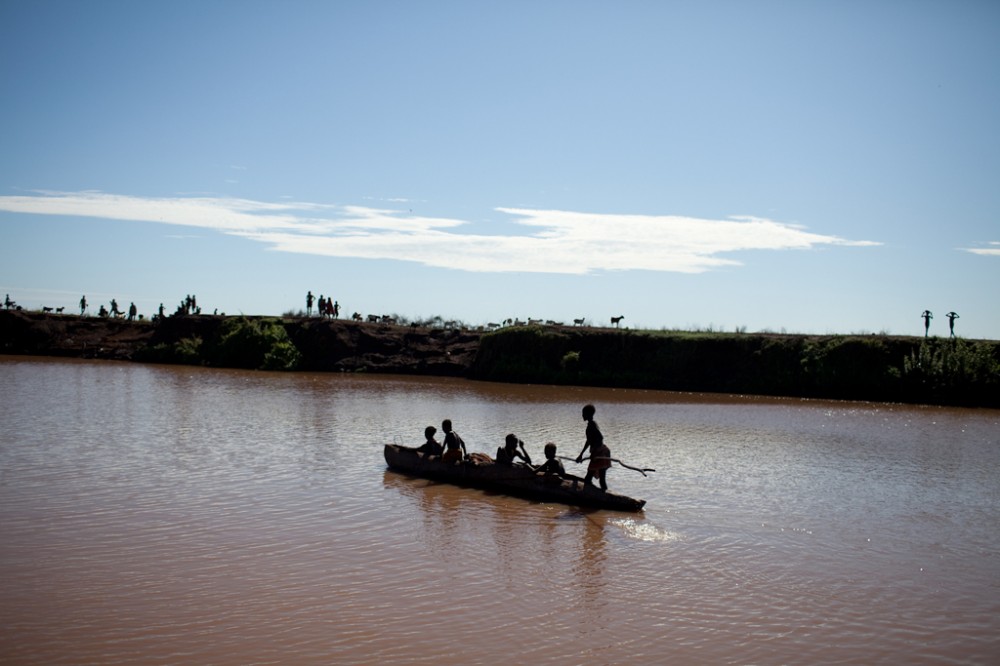When the Water Ends
Throughout the vast, semi-arid lowlands that stretch across most of Kenya and Ethiopia, nomadic herdsmen have walked the harsh, scorched earth for thousands of years. Their lives are the result of constant adaptation to a constantly challenging environment. Their survival depends upon the animals they keep, and guiding cattle to natural water points and grazing grounds determines the paths they cross each year.
Climate change is coming fast, however, and areas once subject to drought every ten or eleven years are now experiencing it every two or three. This is exacerbating traditional inter-tribal tensions as fighting over water and pasture increases, creating “some of the world's first climate change conflicts,” according to Jeanine Cooper, head of the UN Office for the Coordination of Humanitarian Affairs in Nairobi.
Now, more than two dozen tribes are at risk of annihilation, as the Ethiopian government pushes ahead with construction of the Gibe III dam. Promising to be the largest hydropower project in sub-Saharan Africa, contracts are already signed to export half of the energy to Kenya, Sudan and Djibouti. If completed, the dam will prevent the annual flood cycles of the Omo River, which sustain the lives of more than 800,000 indigenous herders, farmers and fishermen in Ethiopia and Kenya.
“It is our lifeblood...the milk of our children,” one Nyangatom elder described the river “If there is no water, the other tribes will cross over onto our side [of the river] and there will be fighting,” a Mursi priest explained.
War among the tribes is imminent if the floods are stopped. Guns are already flowing in from nearby south Sudan and Somalia, and nearly every tribesman carries a Kalashnikov or M-16 to protect his animals and family.
Elsewhere in the region, signs point to a similar fate: all along the border that divides Somali and Borana territories in Ethiopia and Kenya, years of consecutive drought have increased competition over dwindling water and pasture, sharply escalating conflict. As the death tolls rise, tens of thousands are being displaced, increasing starvation and dependency upon international aid.
The future is grim. Prostitution is on the rise among displaced pastoralist women. Many families survive on charcoal burning, firewood collection and begging. While children may have the chance to attend school for the first time as their families migrate to the towns and cities, opportunities are still limited beyond waiting for the next delivery of food aid.
Experts agree that conflict related to resource scarcity will happen by the middle of this century.
In East Africa it’s happening now.





































